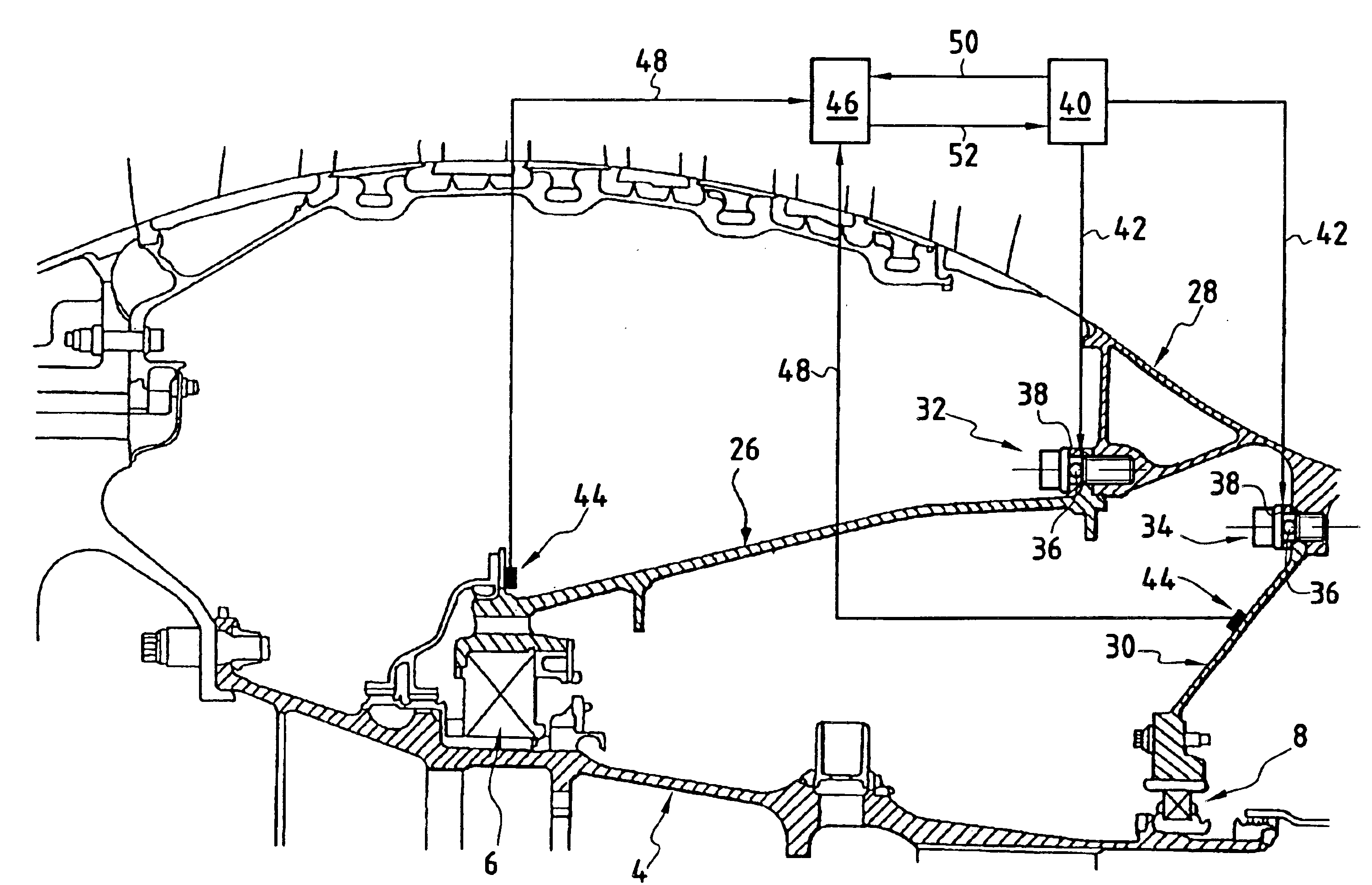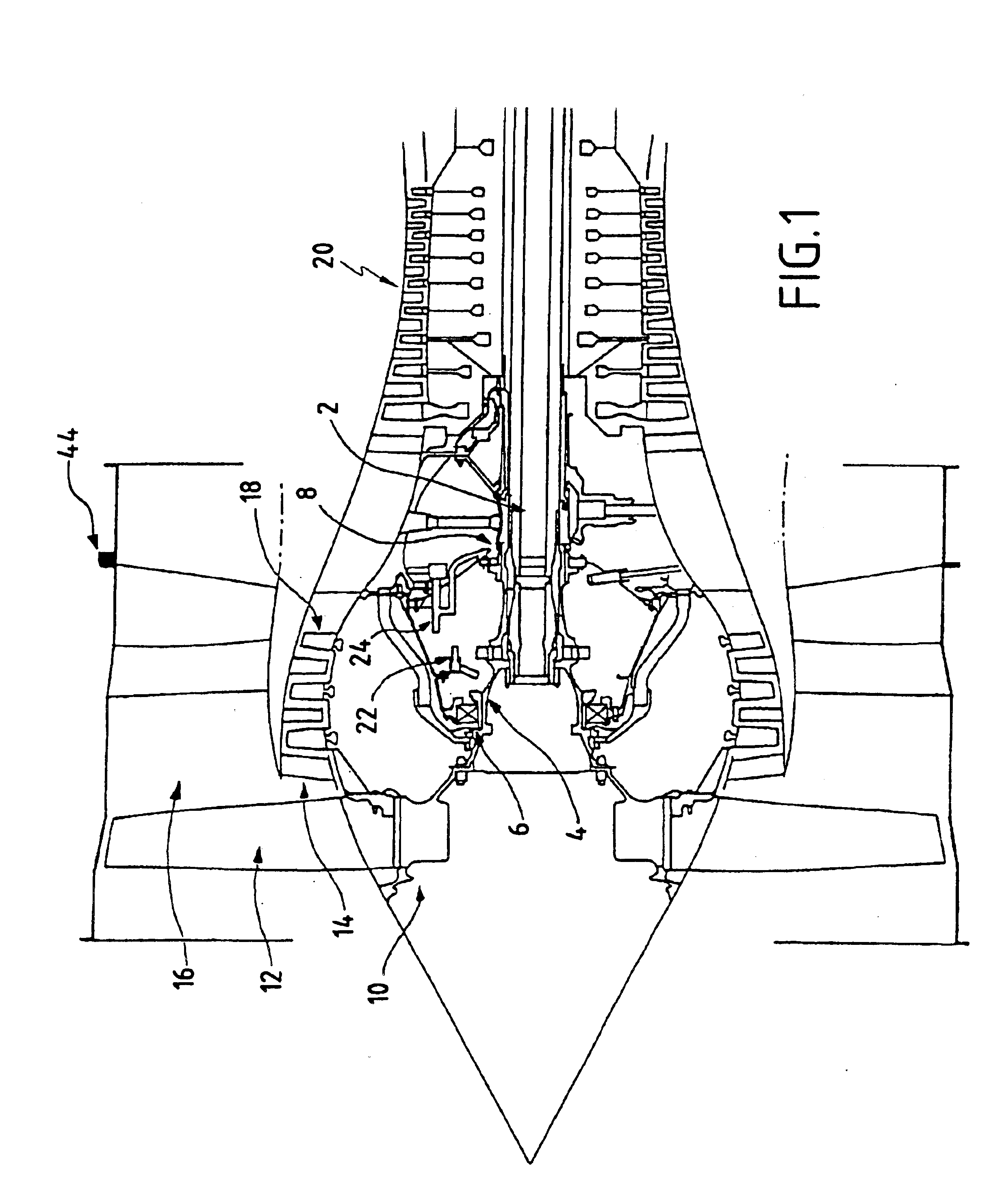System for decoupling a fan from a turbojet by means of an explosive charge
a technology of explosive charge and fan, which is applied in the direction of machines/engines, launching weapons, liquid fuel engines, etc., can solve the problems of significant damage, high level of unbalance, and the decoupling system still presents, so as to eliminate all uncertainties and mitigate the drawbacks
- Summary
- Abstract
- Description
- Claims
- Application Information
AI Technical Summary
Benefits of technology
Problems solved by technology
Method used
Image
Examples
Embodiment Construction
[0015]Reference is made initially to FIG. 1 which shows part of a turbojet in longitudinal section.
[0016]The turbojet is constituted in particular by a low pressure shaft 2, and more precisely a fan drive shaft 4 mounted on a front bearing 6 and a rear bearing 8. At its front end, the shaft 4 carries a fan 10 fitted with a plurality of blades 12 extending radially in front of the inlet to an inner gas stream 14 and the inlet to an outer stream 16 surrounding the inner stream. In the inner stream 14, the turbojet further comprise a low-pressure compressor 18 followed by a high-pressure compressor 20 situated downstream therefrom. Lubrication ducts 22 and 24 connected to pumps (not shown) serve to inject oil into the bearings 6 and 8.
[0017]In FIG. 2, it can be seen that the front bearing 6 is supported by a front bearing support 26 which is connected to part of the stationary structure 28 of the turbojet. Similarly, the rear bearing 8 is supported by a rear bearing support 30 which is...
PUM
 Login to View More
Login to View More Abstract
Description
Claims
Application Information
 Login to View More
Login to View More - R&D
- Intellectual Property
- Life Sciences
- Materials
- Tech Scout
- Unparalleled Data Quality
- Higher Quality Content
- 60% Fewer Hallucinations
Browse by: Latest US Patents, China's latest patents, Technical Efficacy Thesaurus, Application Domain, Technology Topic, Popular Technical Reports.
© 2025 PatSnap. All rights reserved.Legal|Privacy policy|Modern Slavery Act Transparency Statement|Sitemap|About US| Contact US: help@patsnap.com



